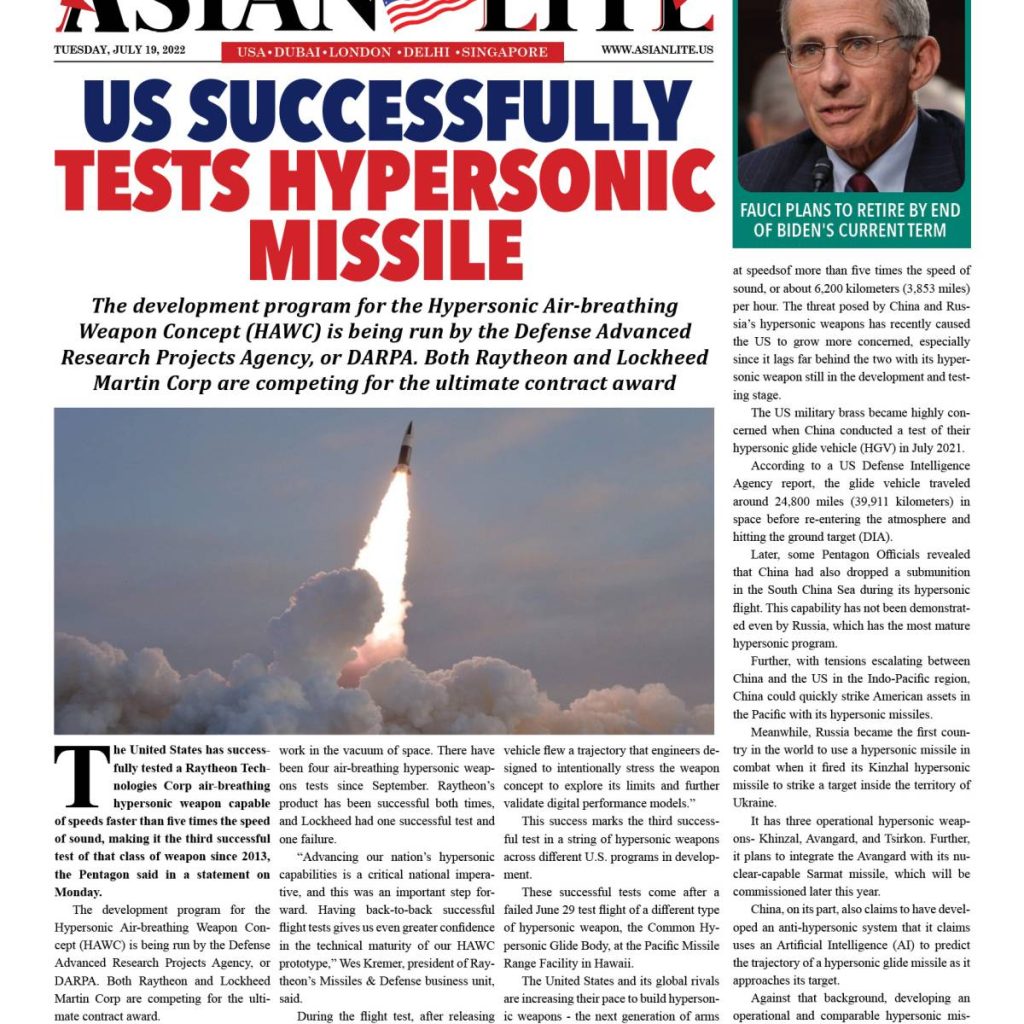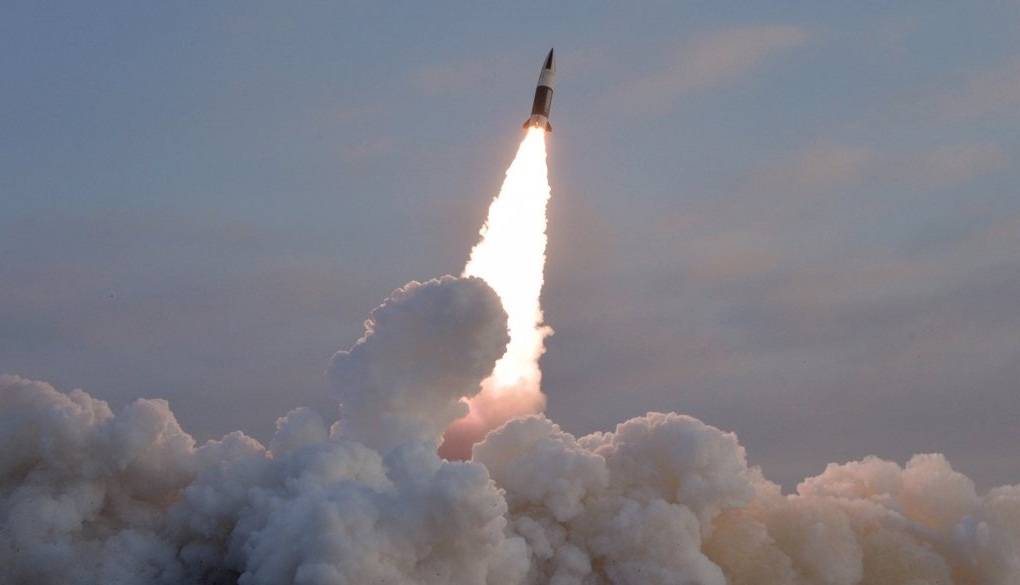The development program for the Hypersonic Air-breathing Weapon Concept (HAWC) is being run by the Defense Advanced Research Projects Agency, or DARPA. Both Raytheon and Lockheed Martin Corp are competing for the ultimate contract award…reports Asian Lite News
The United States has successfully tested a Raytheon Technologies Corp air-breathing hypersonic weapon capable of speeds faster than five times the speed of sound, making it the third successful test of that class of weapon since 2013, the Pentagon said in a statement on Monday.
The development program for the Hypersonic Air-breathing Weapon Concept (HAWC) is being run by the Defense Advanced Research Projects Agency, or DARPA. Both Raytheon and Lockheed Martin Corp are competing for the ultimate contract award.
Air-breathing vehicles use air captured from the atmosphere to achieve sustained propulsion. Different propulsion types work in the vacuum of space.
There have been four air-breathing hypersonic weapons tests since September. Raytheon’s product has been successful both times, and Lockheed had one successful test and one failure.
“Advancing our nation’s hypersonic capabilities is a critical national imperative, and this was an important step forward. Having back-to-back successful flight tests gives us even greater confidence in the technical maturity of our HAWC prototype,” Wes Kremer, president of Raytheon’s Missiles & Defense business unit, said.
During the flight test, after releasing HAWC from an aircraft and accelerating to hypersonic speeds using the scramjet engine, Raytheon said in a statement, “The vehicle flew a trajectory that engineers designed to intentionally stress the weapon concept to explore its limits and further validate digital performance models.”
This success marks the third successful test in a string of hypersonic weapons across different U.S. programs in development.
These successful tests come after a failed June 29 test flight of a different type of hypersonic weapon, the Common Hypersonic Glide Body, at the Pacific Missile Range Facility in Hawaii.
The United States and its global rivals are increasing their pace to build hypersonic weapons – the next generation of arms that rob adversaries of reaction time and traditional defeat mechanisms. Hypersonic weapons travel in the upper atmosphere at speedsof more than five times the speed of sound, or about 6,200 kilometers (3,853 miles) per hour.
The threat posed by China and Russia’s hypersonic weapons has recently caused the US to grow more concerned, especially since it lags far behind the two with its hypersonic weapon still in the development and testing stage.
The US military brass became highly concerned when China conducted a test of their hypersonic glide vehicle (HGV) in July 2021.
According to a US Defense Intelligence Agency report, the glide vehicle traveled around 24,800 miles (39,911 kilometers) in space before re-entering the atmosphere and hitting the ground target (DIA).

Later, some Pentagon Officials revealed that China had also dropped a submunition in the South China Sea during its hypersonic flight. This capability has not been demonstrated even by Russia, which has the most mature hypersonic program.
Further, with tensions escalating between China and the US in the Indo-Pacific region, China could quickly strike American assets in the Pacific with its hypersonic missiles.
Meanwhile, Russia became the first country in the world to use a hypersonic missile in combat when it fired its Kinzhal hypersonic missile to strike a target inside the territory of Ukraine.
It has three operational hypersonic weapons- Khinzal, Avangard, and Tsirkon. Further, it plans to integrate the Avangard with its nuclear-capable Sarmat missile, which will be commissioned later this year.
China, on its part, also claims to have developed an anti-hypersonic system that it claims uses an Artificial Intelligence (AI) to predict the trajectory of a hypersonic glide missile as it approaches its target.
Against that background, developing an operational and comparable hypersonic missile and an interceptor becomes inevitable for ensuring American security and meeting the security challenges of the 21st century.














